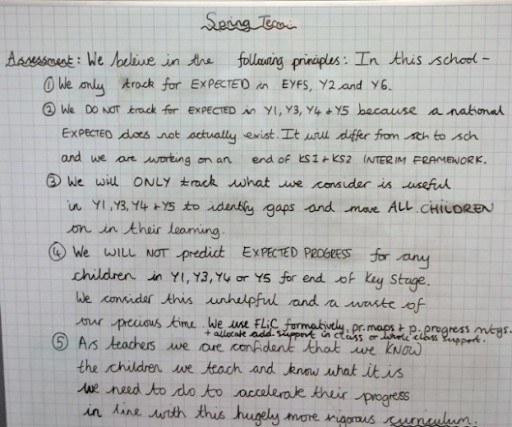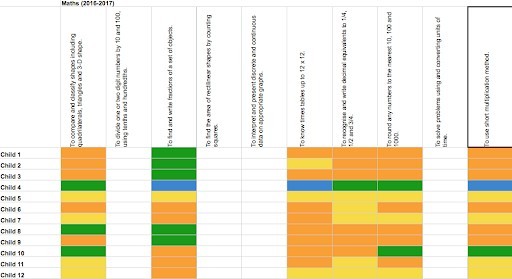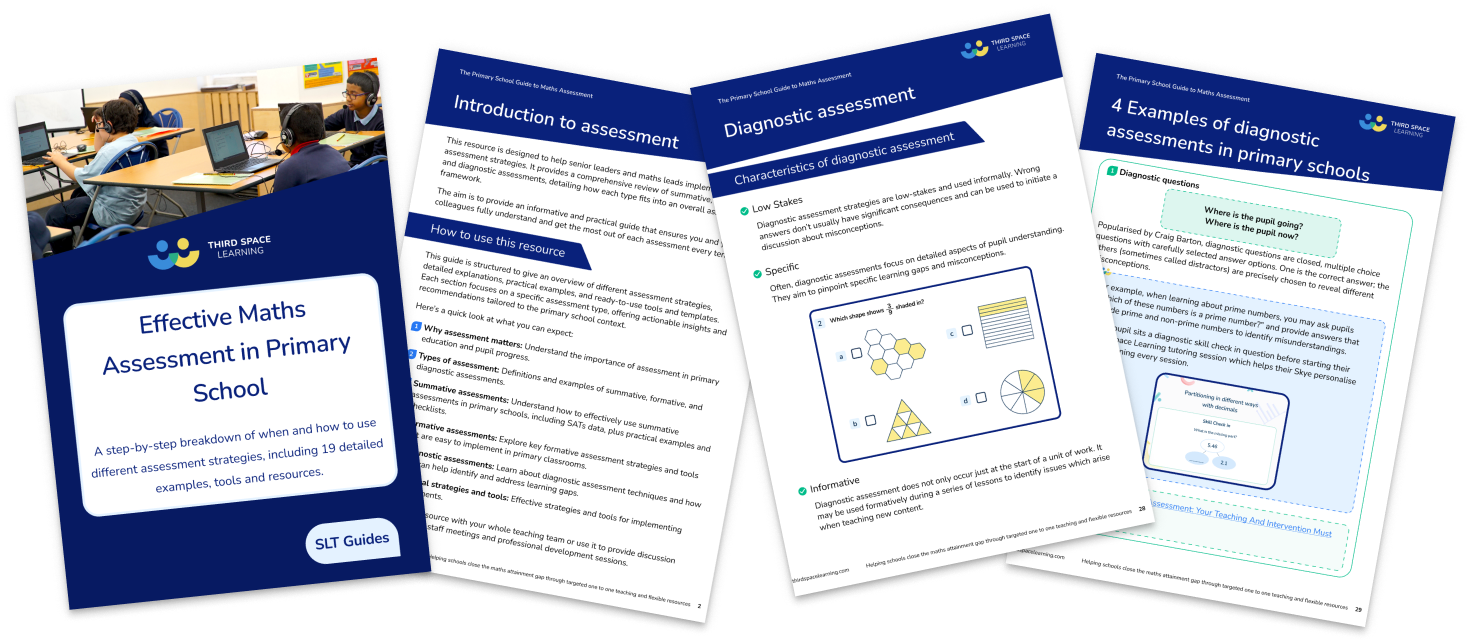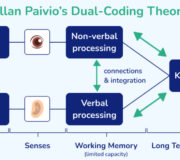The Myth of Expected Progress in Primary Schools
Expected progress is a myth. It does not exist. It is futile to attempt to assign a number or a percentage to it. Predicting ‘expected’ progress in Key Stage 2 is a meaningless attempt to quantify how many pupils will meet standards at the end of Year 6, yet schools up and down the country are still attempting to. My question is why?
First of all, Ofsted do not require ‘expected progress’. Sean Harford, Ofsted’s National Director of Education, has publicly stated over the last few weeks that, ‘expected progress is old money’. He also compares it to those who still believe in the Loch Ness Monster! It does not exist, it’s madness!
Sean Harford has confirmed to me that this is what inspectors want to see during an inspection:
“We want to see the assessment information you use as a school to identify how well your pupils are progressing in your curriculum and, crucially, how you use that information to improve pupils’ achievement.”
The Primary School Guide to Maths Assessment
A breakdown of the different types of primary maths assessment, with proven strategies and free resources to use in the classroom.
Download Free Now!Notice he does not mention of numbers of pupils who are on track. No percentages. No predictions. Just common sense; which pupils are behind, and what are you doing about it?
Unfortunately, there are people out there, such as LA advisors or governor,s who are demanding to see it, which is causing a lot of angst and confusion.
I know, because I have been one of them.
Moving past the progress myth
You can tell advisors and governors to stop asking, and explain confidently that quantified expected progress is a myth. Sean Harford is writing to his inspectors to remind them not to ask you for it. Finally, it is going to be added to the essential Ofsted Myths Document.
In his blog post, The Progress Myth Revisited, James Pembroke (School data updates @jpembroke) explains the myth in glorious detail, and also expertly discusses measuring progress at length expertly in the Youtube video ‘Measuring Progress’.
Progress without levels
This is a huge breakthrough and is an outcome which we all hoped would develop since the the end of levels. We have to embrace it as a profession and create our own assessment systems without numbers for KS1 and KS2.
I have been liaising with inspirational people like Lee Card (@eduCardtion), a fellow Deputy Head and assessment leader who has been using a system without numbers and percentages for the last 2 years. His vision for assessment mirrored mine for my primary school and over the last few months I have been working closely with my Headteacher, staff and governors to embed this vision in our establishment.
Principles for progress at my primary school
These are our principles for progress:

Firstly, our vision and assessment principles in school recognise that pupils do not make linear progress – progress is far more complex than this, so why try to measure it with numbers and percentages? It cannot be done accurately. As a profession, we’ve been there and done that. Which, notably, ended with Dylan Wiliam recommending the abolition of levels.
Therefore, we are not going to do it in Years 1, 3, 4 or 5. We can however, track for the expected standard in Reception, Year 2, and Year 6 as we have the interim frameworks for this year.
Secondly, we are moving towards recognising that, as teachers, we are confident that we know the pupils we teach and know what we need to do to accelerate their progress in line with a more deep and rigorous curriculum. Therefore, we will only track where we consider it to be useful for identifying gaps in pupil learning.

Meet Skye, the voice-based AI tutor making maths success possible for every student.
Built by teachers and maths experts, Skye uses the same pedagogy, curriculum and lesson structure as our traditional tutoring.
But, with more flexibility and a lower cost, schools can scale online maths tutoring to support every student who needs it.
Watch Skye in actionWhat is progress?
When re-considering progress, a good place to start is by asking: what is it? James Pembroke defines progress brilliantly as:
- Catching up
- Filling gaps
- Deepening understanding
- Overcoming barriers
In other words, the real nitty gritty small steps of progress which pupils make every day. Real learning which can be ugly and turbulent. It cannot be equated to a nice looking number! Clare Sealy (@ClareSealy) has blogged brilliantly about this in her ‘Test to the teach‘ blog.
Measuring progress – high stakes and unattainability
You see, numbers and percentages always lead to high stake systems of accountability. Instead of concentrating on an end percentage, teachers should be left to teach and assess the curriculum; to focus on the nitty gritty of filling gaps, next steps of learning, and the progress points James Pembroke makes above.
After all, every teacher from Year 1 to Year 6 wants all of their pupils to be the best that they can be come the end of the year. So as a leader, trust and support them as much as you can.
Also, teachers do not work best when they feel threatened with unrealistic or even unattainable targets. These can result in highly stressful situations where teachers cannot be at their best and gaming can even occur, as with sub-levels and points of progress.
Let’s not make the same mistakes. Let’s create a system where teachers are trusted and supported and we gather assessment information which helps us to know who is falling behind and crucially what we are doing to support them.
Making progress easier – low stakes, high impact
At my school, we use tracking software called FliC from Year 1-6 which is just like an electronic mark book. It is easy to enter data either on a laptop, iPad or phone. Both our KS1 and our KS2 teachers are beginning to use FliC more regularly (for example on PPA) as a natural part of their assessment process rather than something that has to be handed in on a deadline set by myself. The low stakes approach we are now using contributes enormously to this shift in thinking. We want FliC to be a natural tool which helps teachers to make judgements about their pupils, not an accountability measure.
Last year, we were assessing against too many objectives in reading, writing and maths. As assessment leader at the end of the year I had too much information, which was not useful. In September, we asked ourselves what information would be useful for us to have? From that, we narrowed the objectives down to only 10 in reading, 10 in writing and 10 in maths per year group. I’ve included our objectives in the pupil progress tracker – this will give you a starting point although I recommend you choose the 10 per year that work for you.
We decided that just because we are not tracking something it does not mean that it is not being taught. As Michael Tidd states, ‘tracking is not assessment.’ After all, the pupils have books, which are still an excellent tool for looking at progress.
Read more about assessment:
- Formative and summative assessment
- Formative assessment & Formative assessment examples
- Summative assessment
From this newer, narrower information feed, we now have 5 statements which a child can be at at any given time during the year:
- Not applicable (red)
- Working towards objective with adult support (orange)
- Working towards objective (yellow)
- Has achieved objective (green)
- Has achieved and beyond – e.g. apply it across the curriculum, depending on objective (blue)
Now, this seems very complicated at first glance, but it really is not. As a teacher with 30 pupils in my Year 4 class, the first statement is not applicable for 29 of them. This is usually for pupils with SEND who are working below your year group objectives.
The second statement is usually the small group of pupils who regularly need mine or my TA’s support. The fifth statement is for a very small number of pupils. For example in maths, I have only two boys who have achieved the working beyond expected on 2-3 objectives so far this year.
This really leaves only 2 key statements, which are working towards and achieved. The key question for me is, can this child show me that they have achieved this objective? The teacher is always the final arbiter on these decisions because they know the pupils best.
FliC in practice
This is what it looks like in my class at the moment for maths on FliC (the blank objectives have not been taught yet)

Data to help make progress
This is very useful data and is brilliant as a starting point for discussing real pupil progress. As assessment leader I have these sheets for all classes across the school for KS1 and KS2 so at our pupil progress meetings in a can quickly navigate and discuss issues, successes etc.
Importantly, these discussions are designed to be supportive to teachers. I’m not trying to overcomplicate anything or catch anyone out. Not using numbers or percentages lowers the stakes and ensures the conversation is about pupil progress and how we’re working towards achieving it.
For example looking at the picture above, I would like to know why child 5 is yellow in all the assessed objectives? Why does he need support at the moment? What interventions are in place? Are they working? Is this child supported at home? Is he engaged in his learning? Does the teacher need more resources in order to help this child? Let’s take his maths book and have a look at progress since September. It could be that child 5 is still yellow because he has not secured the building blocks of place value and calculating. Therefore as a result of the pupil progress meeting he is going to have an intervention with me to boost his knowledge of the basics.
Why is child 4 blue at finding fractions of a set of objects and numbers but pupils 1,2,3,8 and 9 are still green? What can these pupils learn from child 4? How can we get them there?
Getting rid of numbers and percentages
We believe that these pupil progress discussions enable us to show how we are using assessment to improve pupils’ achievement, in response to the quote from Sean Harford of Ofsted at the start of this piece.
Importantly, we will not be producing any numbers from our tracking system. I won’t be working out percentages of pupils who are ‘on track’ because it would be a waste of my time. On track for what? An interim assessment framework which is only for this year? An expected standard which differs depending on what school you work in?
Instead, the systems we already have in place such as our pupil progress meetings, provision mapping and book looks need to be even more robust. I personally feel more confident that without numbers and percentages we will become better in our assessments as a school.
Teacher led, pupil focused progress
Thus, this is how we are tracking some of our learning across the school, but remember it is not the most important element and it is not where we start when we consider progress. The most important element is what happens every day in the classroom: questioning by the teacher, verbal and written feedback and working with those 5 pupils who ‘did not get it today’ to fill that gap. This is the backbone of understanding how to improve progress and, only as a result of all this hard work we can then begin to track some of it.
How could it work in your school?
If you wish to review your assessment procedures like I have done this year here’s the broad outline process I took and would recommend for moving it forwards, obviously in conjunction with your head.
- Firstly ask yourself what is your fundamental belief about what assessment is at your school?
- Once you have the answers to that, think about your assessment principles. What are the most important aspects of assessment for you and what are you not willing to change for anyone? These can then be included in your assessment policy.
- Involve your staff, who will then have ownership and belief in it because of their input. They need to both own and understand the principles behind it.
- Explain it fully to your governing body. This went really well at my school. The governors could see clearly what our assessment principles were, and that expected progress is a myth. A couple of them commented that it was the first time that they have clearly understood assessment in the new curriculum. I now feel that all stakeholders are invested in our policy.
Our assessment system is not complete. It will be honed and tweaked regularly in collaboration with our staff but without the expected progress myth I am a lot clearer now about what we are doing as a school. Remember, what we are doing is not being brave. It is based on fundamental beliefs about what we feel assessment is. Go for it!
You may also be interested in:
DO YOU HAVE STUDENTS WHO NEED MORE SUPPORT IN MATHS?
Skye – our AI maths tutor built by teachers – gives students personalised one-to-one lessons that address learning gaps and build confidence.
Since 2013 we’ve taught over 2 million hours of maths lessons to more than 170,000 students to help them become fluent, able mathematicians.
Explore our AI maths tutoring or find out about maths intervention programmes for your school.







